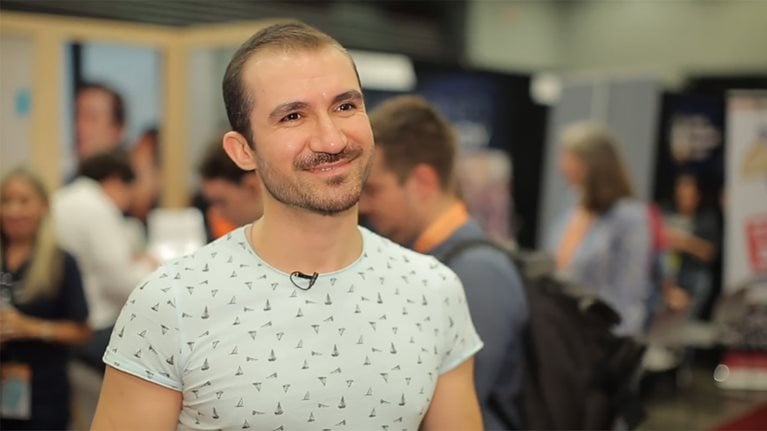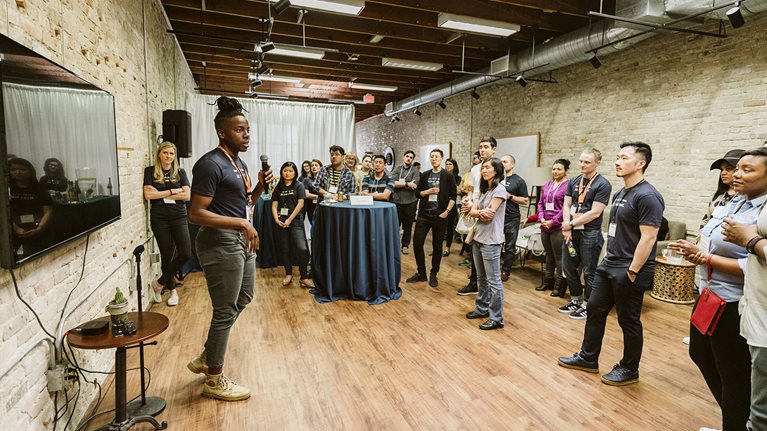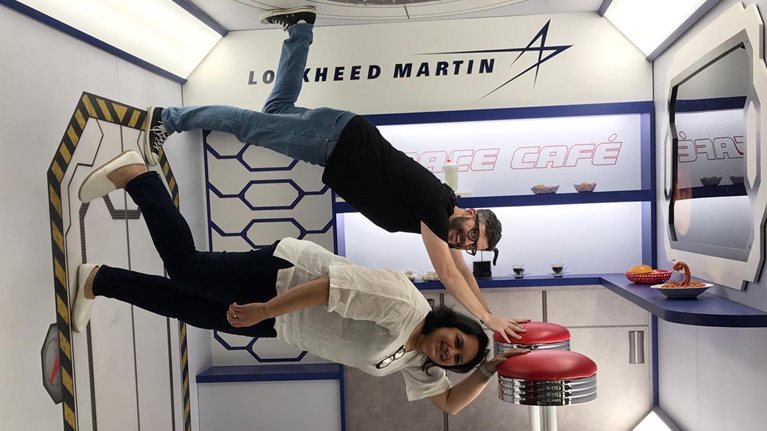This week’s tech news will include countless roundups from the executives, politicians, Hollywood celebrities, and others who descended upon Texas’s capital city, and home to McKinsey’s own Austin design studio, for this year’s installment of South by Southwest (SXSW). Here are some of the highlights of the conference from a few of our McKinsey participants.
Culture club
It’s notable that, for an event so grounded in themes about or around technology, nontechnical topics—like those of culture and values—received significant airtime.
Halil Cobuloglu, a McKinsey data scientist focused on geospatial optimization and supply-chain management, noted “the impact of culture not only in adoption of new technologies but also in innovation.” He says, “We are in a cultural change, with more people willing to take risks. The vision is to transform and teach people and make them a part of this cultural transformation to move forward. This new culture is to encourage innovation by not labeling it as a win or lose case; rather, it is to make things happen first and improve them later.” This philosophy is very much in line with DevOps and agile practices embraced by countless engineering, innovation, and other functional teams.

Rakhi Rajani, an associate principal with McKinsey Digital Labs and an expert in the Internet of Things (IoT), noted: “One of the most compelling themes for me was the ongoing conversation around artificial intelligence (AI) and human intelligence. There are complex, entangled questions stemming from whether or not AI and the human brain will ‘merge’ and whether or not technology could be used to enhance human intelligence and potentially unlock new parts of the brain, such as memory systems and more. Questions like these, in turn, can spark many ethical debates and philosophical questions around the definition of consciousness: How do we measure it? Can we design consciousness into systems? While the answers to these questions will take some time to be untangled, what came across very clearly was that we need to design algorithms to reflect values and accountability; ‘The machine ate my homework’ may not be a tenable answer for long.”
So much to say
Jared Culp is an associate design director at McKinsey, based in our Austin design studio just down the road from most of the SXSW sessions. Jared opted to attend not only design-specific sessions but also a sampling of topics that give a sense of the diversity, breadth, specificity, and sheer volume of topics and experts that SXSW showcases. For example, he says, “China Gathering had a great talk on cashless societies. They talked about Ant Financial, which has an interesting approach to the future of payments and also solutions to increase sustainability. They explained a gamified system that encourages customers to make good choices for the environment and rewards them with digital badges or planting trees in exchange. It was eye-opening to see how you can encourage and change people’s habits with the right incentives.”
Jared switched gears from payments in China to historic and emerging business models in media: “The New Yorker explained the evolution of its platform and how it has adapted to the Internet. The historically thorough publication now releases articles that have been worked on for as little as eight hours and has opened its audience to a whole new generation and demographic.”

Relationship goals
As IoT technology has matured, so too have the use cases. That’s why we think the focus should shift to what we would call the ‘Relationship of Things,’ purely because it is the relationships—among objects, data, people, systems, policies, and so on—that are more important than any element alone. Take the smart cities debate, which I heard in full force at SXSW. We have thrown tech at single elements of a city for a long time, but the debates that emerged over the course of the week put ecosystems back at the center. Truly smart cities, we discussed, are those that are liveable, that enable businesses to thrive, and that shape communities (of people, business, government, and others). It’s the ‘in-between’ points and invisible connections that will really make a city smart. These in-between points go beyond tech to physical infrastructure, services, and so on. In this way, organizations are beginning to explore new business models and partnerships that have not otherwise naturally formed.
Space cowboy
As one of McKinsey Digital’s global experts in engineering the new space economy, Rakhi noted that the sheer number of space-related sessions seemed unprecedented this year: “As we approach 50 years since the first man on the moon, and as launch costs have decreased and private funding has shot up, the big draw was, not surprisingly, space and what will happen next. Will we make it to Mars, will we inhabit the moon, will we really be able to fly between countries on earth in a matter of minutes? The resounding answers are yes—and soon—and the discussions we had with large corporates and smaller start-ups was inspiring. With this, though, comes a whole bunch of open questions, from who ‘owns’ parts of the moon (space law) to the business models and industries we will need to spawn and the experiments we still need to perform to make mainstream human exploration of space feasible, worthwhile, and experiential. It’s an exciting topic of my own research, and it’s truly inspiring to connect with and hear new perspectives from so many others.”

Parting thoughts
“For the near-term and tangible takeaways, there were interesting conversations exploring what skills we would need in the future (actually, more so now),” says Rakhi. “One exhibition that tackled this identified eight potential skills we would need to look for and train for: critical thinking, multidisciplinary collaboration, ethical leadership, data literacy, empathy, purpose-driven entrepreneurship, community building, and divergent thinking. While upon first glance it is easy to just say ‘yes, of course’ or ‘I know that,’ it’s more of a challenge if we think through whether or not we always do our best to enable these traits in ourselves and others. Frontiers of knowledge exist at the intersection of disciplines, personalities, and mind-sets, and frontiers of knowledge are what we need to drive, so we need to do more to develop skills and intertwine disciplines and views.”
Rakhi concluded, “I was impressed at both the breadth of topics and ambition but also, candidly, a little underwhelmed that the discussion about humans and tech is still often at the ‘go out and research human behavior’ stage. I was hoping a few folks would be bolder or more prescriptive at this point.”
“The most interesting overall idea I captured at SXSW,” adds Halil,”is that we are the founders of the future. Tomorrow’s AI will be built on what we do today. The way we set the rules, ethics, and standards in advanced analytics today will define the speed of our advancement in technology and its large-scale adoption in daily life. I believe it is our responsibility to take a step back and discuss technology both more in-depth as well as strategically, as the settings we apply today could be a catalyzer (as well as a constraint) on what happens in the future.”
Halil Cobuloglu is a data scientist on the geospatial team in McKinsey’s North America Knowledge Center. He specializes in optimization modeling and analytic solutions in the healthcare, energy, and food/agriculture industries, with deep expertise in supply-chain management.
Jared Culp is an associate design director at McKinsey, based in McKinsey’s Austin design studio. He has a background in interaction and visual design as well as design research. He is also a lecturer at the University of Texas at Austin, where he teaches qualitative design research.
Rakhi Rajani, a senior design expert at McKinsey, works at the intersection of psychology, engineering, and design and cares about foresight and futures. Based in London, most of her work is in emerging economies such as the Middle East and China.
Peri Kadaster is director of marketing for McKinsey Digital Labs, and Chris Smith is a partner in McKinsey’s London office.
